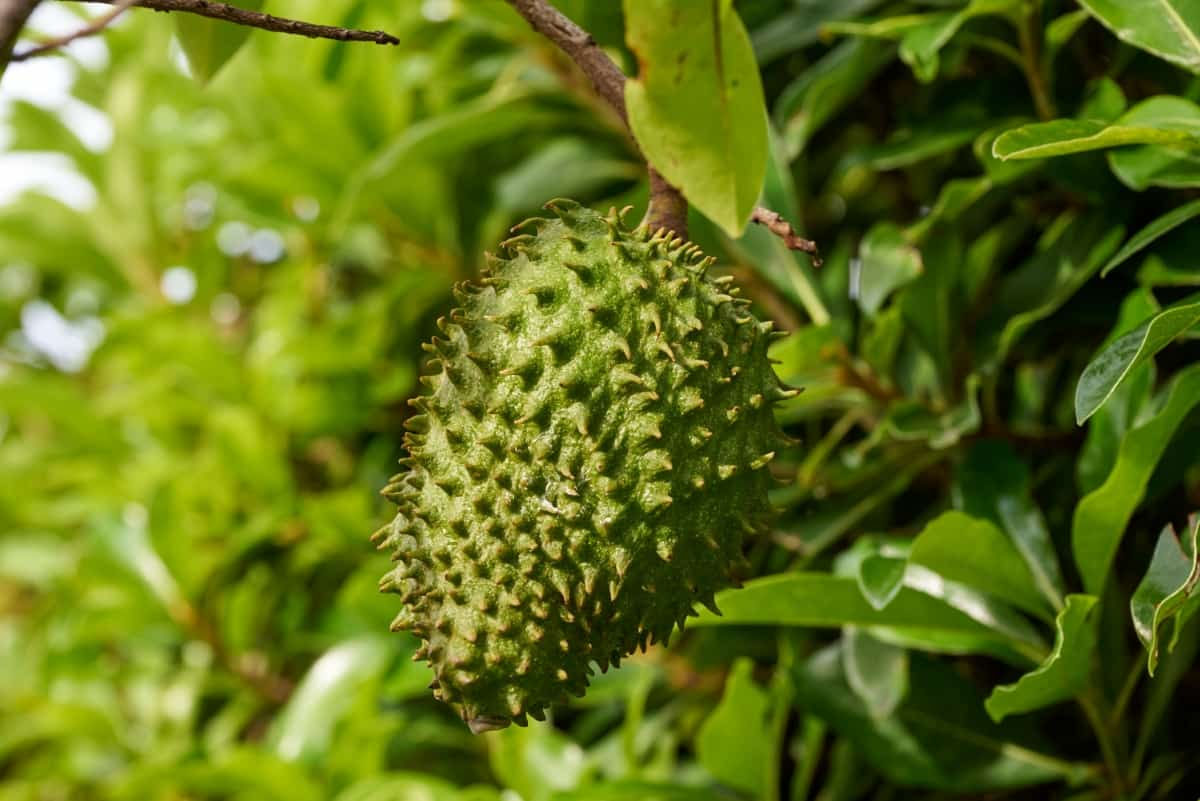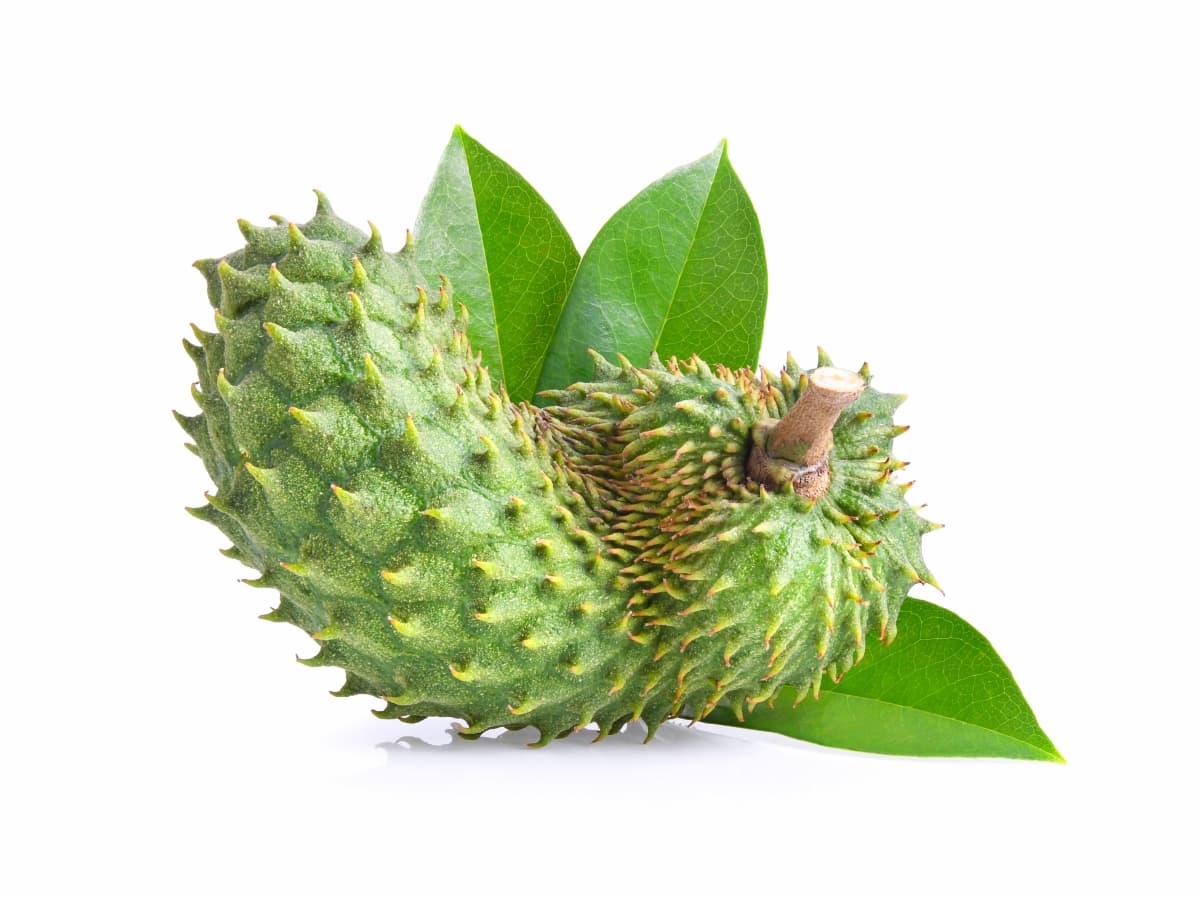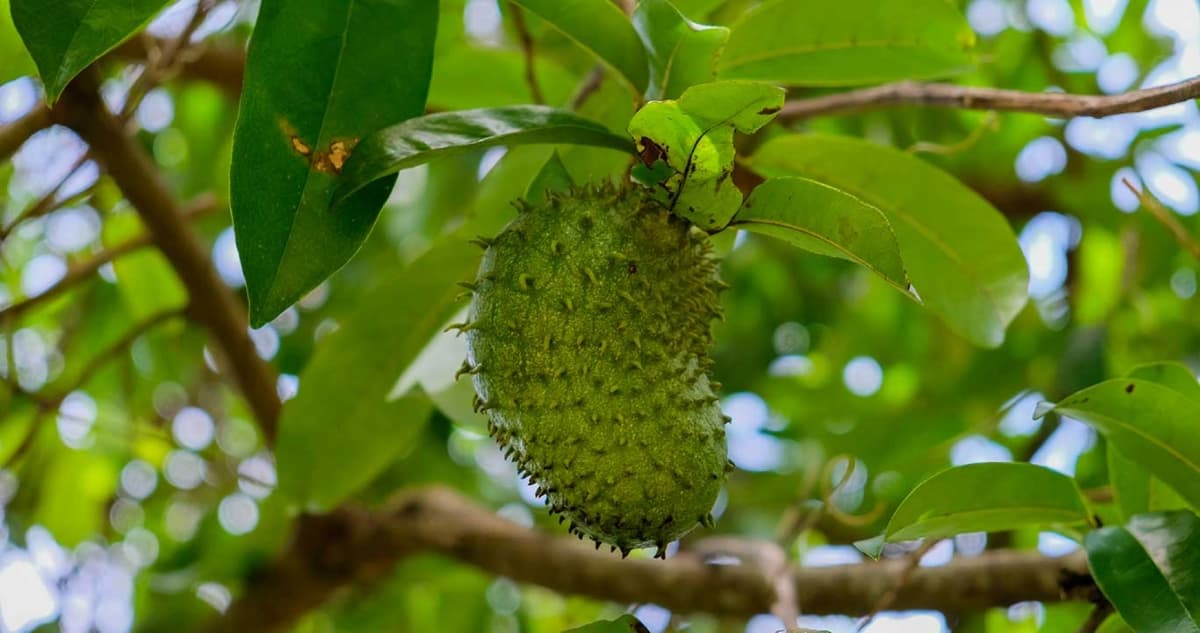Dying soursop trees can be a frustrating experience for any gardener or farmer. It is important to identify the underlying causes of the problem to fix it and prevent it from happening again. Here are 9 causes of dying soursop trees and how to fix them.

9 Causes of Dying Soursop Tree
Why is My Soursop Tree Dying in Summer Heat, and How Can I Save It?
Soursop trees can typically survive in temperatures between 15-29°C. However, temperatures above 35°C can be fatal to the tree, especially if it is not given adequate water and protection from the sun.
- If you are worried about your soursop tree surviving in the summer heat, you can do a few things to help it. Make sure to water the tree deeply and frequently, especially during periods of extreme heat.
- You can also provide shade for the tree by using shade cloth or planting it in a spot where it gets partial shade during the hottest day.
Preventing Soursop Tree Death from Fungal Infections: Effective Remedies and Prevention Tips
Powdery Mildew
- This fungus causes a white powdery substance to appear on the tree’s leaves.
- The infected leaves may also become distorted or die. A fungicide such as sulfur can be sprayed on the tree to prevent powdery mildew.
Leaf Spot
- It causes brown spots to appear on the leaves of the soursop tree. The spots may also have a yellow halo around them. Over time, the leaves may become yellow and fall off the tree.
- A fungicide such as chlorothalonil can be sprayed on the tree to prevent leaf spots.
Identifying Nutrient Deficiencies in Soursop Trees and Remedies to Revive Them
Nitrogen Deficiency
- Symptoms of nitrogen deficiency include yellowing of leaves, stunted growth, and reduced fruit production.
- To fix nitrogen deficiency, apply a nitrogen-rich fertilizer such as ammonium nitrate, urea, or fish emulsion.
Phosphorus Deficiency
- Phosphorus deficiency can cause the leaves of soursop trees to turn dark green or purple. The tree may also produce small, underdeveloped fruit.
- To fix phosphorus deficiency, apply a fertilizer that contains phosphorus, such as bone meal or rock phosphate.
Potassium Deficiency
- Potassium deficiency can cause the leaves of soursop trees to appear scorched or burnt around the edges. The tree may also produce small, underdeveloped fruit.
- To fix potassium deficiency, apply a potassium-rich fertilizer such as potassium sulfate or wood ash.
How to Protect Soursop Trees from Pests and Diseases to Prevent Decline and Death
Pests
- Soursop Fruit Fly: To control fruit flies, use neem oil, garlic, and water. Spray the mixture on the tree and the fruit.
- Mealybugs: To control mealybugs, use a mixture of rubbing alcohol and water. Spray the mixture on the leaves and the trunk.
- Whiteflies: To control whiteflies, use a mixture of soap and water. Spray the mixture on the leaves and the trunk.
- Caterpillars: To control caterpillars, use a mixture of Bacillus thuringiensis (Bt) and water. Spray the mixture on the leaves.
In case you missed it: 9 Causes of Dying Loquat Trees and How to Fix Them?

Diseases
- Anthracnose: This fungus causes dark lesions on the leaves and fruit of the tree. Over time, the lesions may become large and cause the fruit to rot. A fungicide such as copper oxychloride can be sprayed on the tree to prevent anthracnose.
- Black spot: Organic fungicides, such as neem oil or copper soap, can also effectively control the disease.
Overwatering Issues in Soursop Trees: Signs, Symptoms, and Steps to Rescue a Dying Tree
Overwatering can have a detrimental effect on the health of Soursop trees. It can cause various issues, including.
- Yellowing leaves: This occurs when the tree’s roots become waterlogged, preventing them from absorbing nutrients properly. As a result, the leaves will sometimes start to turn yellow or brown.
- Stunted growth: When the tree’s roots are constantly saturated with water, they cannot absorb the nutrients they need to grow. This can lead to stunted growth.
- Root rot: It can be difficult to detect, but some signs include a mushy texture in the roots, a foul smell, and black or brown spots on the roots.
Steps to Rescue a Dying Tree
- Check the soil moisture level by sticking a finger up to the second knuckle into the soil. If the soil is wet, then it is time that the tree is overwatered.
- If the soil is too wet, reduce the frequency of watering.
- When watering the soursop tree, ensure that the water penetrates the soil deeply.
- If the soil is not well-draining, improve the drainage by adding organic matter like compost or peat moss.
Underwatering Issues in Soursop Trees: Signs, Symptoms, and Steps to Rescue a Dying Tree
Symptoms
- Leaf Curling: One of the most visible symptoms of underwatering is the curling of the leaves. The leaves become dry and crispy and start to curl inward, giving the tree an unhealthy appearance.
- Leaf Dropping: The leaves will change to yellow and fall off the tree, causing the tree to become weak and vulnerable to diseases.
Steps to Rescue a Dying Tree
- You should water your tree deeply at least once a week and more often if the weather is particularly dry or hot.
- Check the soil around your tree. If it feels dry to the touch, likely, your tree is not getting enough water. To remedy this issue, increase the amount of water you give your tree.
- Mulch around the base of the tree. Make sure to spread the mulch 2-3 inches deep around the tree, being careful not to pile it up against the trunk.
Soursop Tree Winter Damage/Dying: Protecting Trees from Frost and Cold Temperatures
Soursop trees are tropical plants that may struggle with the colder temperatures of winter. In colder climates, it is common for soursop trees to become dormant during the winter months, which can cause them to lose leaves and appear as though they are dying.
- First, make sure the tree is well-watered before the first freeze. This will help the tree to retain moisture and protect it from dehydration.
- Cover it with a protective barrier. This can be done by wrapping the tree in burlap or using a frost blanket designed for plants.
- Create a microclimate around the tree. This can be done by placing water containers around the tree, absorbing heat during the day, and releasing it at night.
Improper Pruning May Cause Soursop Tree Death: Pruning Methods for Healthy Growth
- If too much of the tree is cut off during pruning, it can stunt the growth and reduce overall health.
- Pruning at the wrong time, such as during the summer months, can damage the tree and encourage the growth of unwanted shoots.
- When pruning, it’s important to avoid cutting too close to the trunk, as this can cause damage and leave the tree vulnerable to infection.
Pruning Methods for Healthy Growth
- Removing dead or diseased branches is important for maintaining the tree’s overall health.
- Removing crossing branches, When branches cross over each other, they can cause damage and inhibit growth. Removing them will allow for healthy growth.
- Thinning out crowded branches, If there are too many branches in one area, it’s important to thin them out to allow for healthy growth.
Reviving a Stressed Soursop Tree: Rehabilitation Methods for Overall Recovery
Soursop trees are known for their delicious fruit and health benefits. However, these trees can become stressed. If you have a stressed soursop tree in your garden, you can use several rehabilitation methods to help it recover and thrive.
- Watering: The first step in reviving a stressed soursop tree is to ensure it receives adequate water.
- Fertilizing: Nutrient deficiencies can also cause stress in soursop trees. Fertilizing your tree can help replenish the nutrients it needs to produce healthy fruit.
- Pruning: Remove any overgrown and diseased branches that are crossing or rubbing against each other, as well as any diseased or damaged branches.
Pest and Disease Control
- Pests and diseases can cause stress in soursop trees.
- You can use an insecticidal soap or oil to control the pests.
- You can prevent these diseases by ensuring proper air circulation around the tree and avoiding overhead watering.
In case you missed it: 9 Causes of Dying Pecan Trees and How to Fix Them?

Conclusion
In conclusion, a dying soursop tree can be caused by various factors. By identifying the cause of the problem and taking the necessary steps to fix it, you can help your soursop tree thrive and produce delicious fruit.
- Feed Your Flock for Less: Top 10 Tips to Save on Chicken Feed
- Ultimate Guide to Ossabaw Island Hog: Breeding, Raising, Diet, and Care
- Hatching Answers: The Top 10 Reasons Your Chickens Aren’t Laying Eggs
- Eggs and Economics: Breaking Down the Cost of Raising Backyard Chickens
- Defend Your Greens: Proven Methods to Keep Iguanas Out of Your Garden
- Ultimate Guide to Cinnamon Queen Chicken: A Comprehensive Guide for Beginners
- Ultimate Guide to California Tan Chicken: Breeding, Raising, Diet, Egg-Production and Care
- Ultimate Guide to Marsh Daisy Chicken: Breeding, Raising, Diet, and Care
- 10 Types of Chicken Farming Businesses You Can Start for Profits